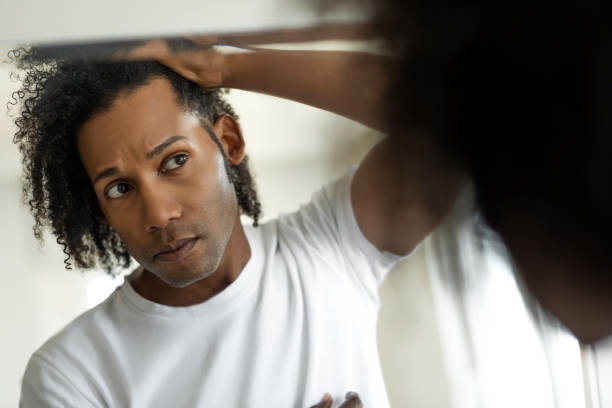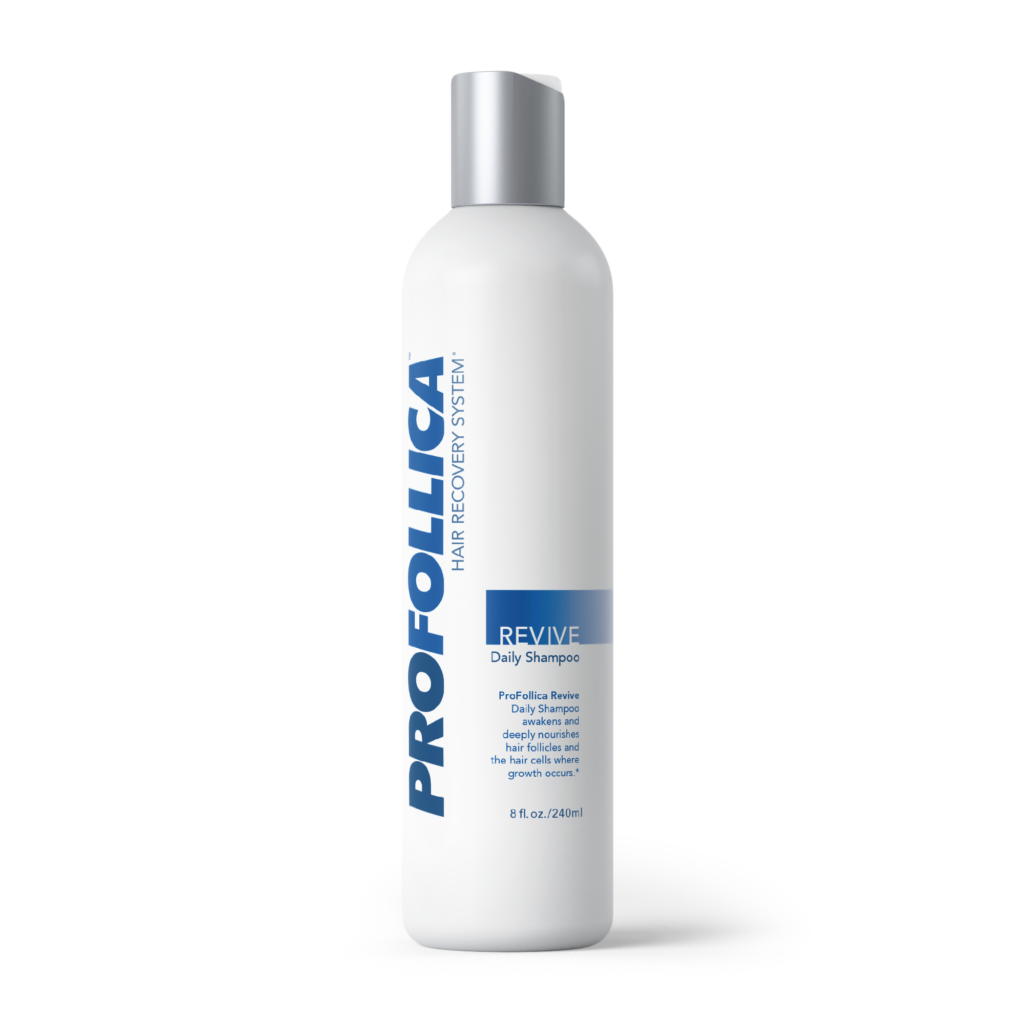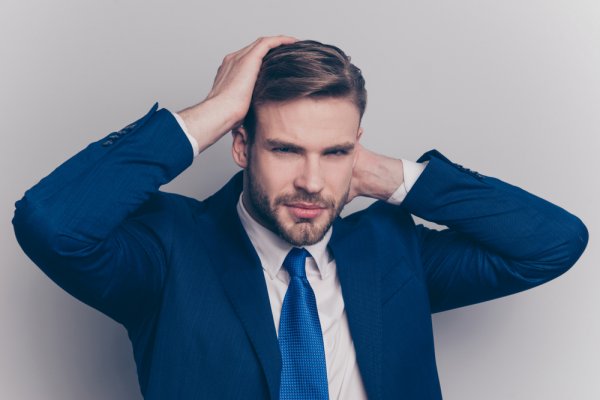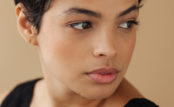Hair loss can be a daunting thing to deal with. Whether it’s permanent or temporary, it’s common to not feel as self-confident while you’re struggling with hair loss.1 Some of the primary causes for hair loss can be hormonal changes, hereditary, medical conditions, or aging. Anyone can experience hair loss; it is not specific to men or women.
So, what can you do? Is there anything that actually works to stimulate new hair growth? There are a lot of supplements that make all sorts of claims – but how can you save yourself the time – and the heartbreak when they don’t work?
It’s important to do your research and only choose supplements or methods that are proven. Let’s dive in to first understand what causes hair loss and a product that has shown to be effective.
Understanding the Condition
Baldness usually refers to excessive hair loss in the scalp area. Hereditary hair loss is typically the most common cause of baldness.2 Some people tend to let their hair loss run its course untreated. On the other hand, some choose to cover it with different hairstyles, hats, makeup, and scarves. There are always treatments available for anyone who can afford them that can help prevent hair loss or restore growth. However, before you decide to pursue any hair loss treatment, you should consult with your doctor about the cause of your condition and the possible treatment options.
What Causes It?
People often lose 50 to 100 hair strands a day3, which is not noticeable because new hair grows simultaneously. Therefore, hair loss occurs when new hair doesn’t grow to replace the ones that have fallen out. The following are some of the reasons why:
Heredity
Heredity condition is one of the most common causes of hair loss that happens with aging. It is referred to as male-pattern baldness, female-pattern baldness, and androgenic alopecia. It typically occurs gradually and showcases predictable patterns, which are a receding hairline and bald spots in males, and thinning hair along with the crown of the scalp in females.
Medications and Supplements
Certain medications and supplements can lead to hair loss, like those used for depression, cancer, heart problems, arthritis, blood pressure, and gout.4
Radiation Therapy to the Head
Undergoing this kind of procedure may result in your hair not growing back the same way as it did before.
Stressful Event
Many individuals experience a general thinning of hair a couple of months after an emotional, or physical trauma. However, this sort of hair loss is temporary.
Hairstyles and Treatments
Extensive hairstyling or hairstyles that involve pulling your hair tight, like cornrows or pigtails, can result in some type of hair loss known as traction alopecia. Hot oil and permanent hair treatments can also cause one’s hair to fall out. In cases where scarring does occur, the hair loss could be permanent.5

Symptoms
Hair loss can present itself in many different forms, based on the cause. It can come on gradually or suddenly and may affect just your scalp or, in some cases, your whole body. Signs and symptoms of the condition include the following:
Gradual Thinning On Top Of the Head
This is the most prevalent type of hair loss. It affects individuals as they age. For men, their hair often begins to recede at the hairline on the forehead, whereas for women, they tend to have a broadening of the missing patches in their hair. On the hand, older women can also experience a receding hairline, also referred to as frontal fibrosing alopecia.
Patchy or Circular Bald Spots
Some hair loss occurs in patchy or circular bald spots on the scalp, eyebrows, or beard. Their skin may also become painful or itchy before the hair falls out.
Sudden Loosening Of Hair
An emotional or physical shock can lead to hair loss. A handful of hair may fall off when washing, combing, or even after gentle tugging. This sort of hair loss typically causes overall hair thinning but is temporary.
Full-Body Hair Loss
Certain conditions and medical treatments like chemotherapy for cancer can result in hair loss all over the body. However, the hair usually grows back.
What Hormones Should You Have Checked?
A common cause of hair loss in women is PCOS (polycystic ovary syndrome). It causes cysts to appear on a woman’s ovaries. Certain kinds of birth control pills can also cause a temporary hormonal imbalance, causing hair loss on the scalp.6
Due to pregnancy, childbirth, thyroid problems, and menopause, hormonal changes can also lead to patchy hair loss.
If you are distressed by persistent hair loss and want to pursue some treatment, you should consult your physician on the best way forward. In fact, for women experiencing a receding hairline, it would be best that you seek medical or expert advice as soon as possible to avoid permanent baldness.
Another essential point to remember is that sudden hair loss can also signify an underlying medication. So, if you start to notice sudden or patchy hair that is unusual when washing or combing your hair, make sure you seek medical advice.

Profillica Revive Can Result in Fuller, Thicker Hair
Profillica Revive can help with hair thinning and in some cases, it can help to restore hair loss. Of course, if you think you have an underlying hormone issue, definitely consult with your doctor. However, Profillica Revive can give you your confidence back by allowing your hair to grow back.
When it comes to hair loss, there are a lot of products on the market that promise results but don’t deliver. Profillica Revive is different. This product has been clinically tested and shown to be effective in treating hair loss.
Who Can Use Profillica Revive?
Just about anyone experiencing hair thinning or hair loss can benefit from using Profillica Revive. This product is safe for both men and women to use. If you have sensitive skin, you may want to test a small amount of the product on your skin before using it on your scalp.
How To Use Profillica Revive
For best results, use Profillica Revive once a day while showering. Apply the product to your scalp and massage it for two to three minutes.
If you are pregnant or breastfeeding, you should not use Profillica Revive. If you have any other medical conditions, please consult with your doctor before using this product.
How Fast Does Profillica Revive Grow Hair?
You should start to see results within four to six weeks. However, everyone is different and some people may see results sooner than others.
If you are not satisfied with the results you get from using Profillica Revive, you can return the product for a full refund within 60 days of purchase.
Powerful Antioxidants to Help Protect Your Hair
Profillica Revive contains powerful antioxidants that help to protect your hair from environmental damage. These antioxidants also help to improve the overall health of your scalp.
What is Everything That Profillica Revive Can Do For You?
- Reduce shrinkage with hair follicles
- Reduces scalp irritation
- Fortifies and strengthens hair follicles
- Stimulates new hair growth
- Anti-aging effects, leading to healthier hair
- Softer hair
- Enhances thickness of hair
- Fights off harmful DHT

Feel Confident Again. Try Profillica Today.
If you’re ready to feel confident again, try Profillica Revive today. With a generous 67-day guarantee, there is no risk for you. This product has helped countless people restore their hair and their confidence. Try it for yourself to see what you can gain (which will be a whole lot of thick hair!)
Now that you’ll have great hair, check out our latest post, “3 Ways to Naturally Boost Your T-Levels This Summer.” Your hair will look great, your mood will be great and your summer will be the best.
- https://www.webmd.com/skin-problems-and-treatments/hair-loss/understanding-hair-loss-basics
- https://www.health.harvard.edu/a_to_z/hereditary-patterned-baldness-a-to-z#:~:text=Hereditary%2Dpattern%20baldness%20is%20the,hair%20thinning%20as%20they%20age.
- https://www.aad.org/public/diseases/hair-loss/insider/shedding
- https://www.arthritis.org/health-wellness/treatment/treatment-plan/disease-management/arthritis-medication-hair-loss
- https://www.aad.org/public/diseases/hair-loss/causes/hairstyles#:~:text=Avoid%20frequently%20wearing%20hairstyles%20that%20pull%20on%20your%20hair.&text=The%20constant%20pulling%20can%20cause,you%20develop%20permanent%20hair%20loss.
- https://www.webmd.com/connect-to-care/hair-loss/how-hormonal-hair-loss-is-different-from-alopecia




